Marcia Thornton Jones's Blog, page 110
October 14, 2018
Villains in Everyday Life, by Michele Weber Hurwitz
I've never been big on including traditional villains and monsters in my books. After all, I don't write fantasy, where many of these characters are a natural part of the stories. All of my novels are contemporary and realistic, set in present day.
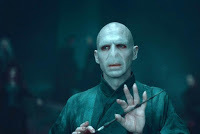
I've had several readers email me when they're doing a book talk or project on one of my books, asking -- who's the antagonist in this story? I usually ask them who they think it is :)
Since our topic this month is on villains and monsters, that got me thinking, who are the antagonists in my stories? And the answer is that I like to weave my "villains" into occurrences and circumstances in the characters' everyday lives, so they're not obvious, but are very real, which is probably why it's a challenge for young readers to figure that out.
In my second novel, The Summer I Saved the World in 65 Days, the antagonist is not a person, but a situation. The neighborhood cul de sac in which much of the story takes place has become detached and distant. A 5-year old character, Thomas, senses this, as he fights invisible "bad guys" in the circle of eight houses. The main character, Nina, starts doing some anonymous good deeds with the hope of bringing people back together. There's an older neighbor who's suspicious of all these unusual happenings and many readers think she's the antagonist, but she's really not. She's just a nervous ninny with a temperamental poodle.
In my first book, Calli Be Gold, the antagonist was the overwhelming pressure that parents can place on their kids to succeed in sports and activities. And in the novel I'm currently working on, the villain is the effects of climate change on a small lakeside Wisconsin town.
Things like that scare me more than Voldemort, even though he's one of the best villains ever written.
Michele Weber Hurwitz is the author of Calli Be Gold, The Summer I Saved the World in 65 Days, Ethan Marcus Stands Up, and Ethan Marcus Makes His Mark. Her next middle grade novel will publish in May 2020. Visit micheleweberhurwitz.com for more info.

I've had several readers email me when they're doing a book talk or project on one of my books, asking -- who's the antagonist in this story? I usually ask them who they think it is :)
Since our topic this month is on villains and monsters, that got me thinking, who are the antagonists in my stories? And the answer is that I like to weave my "villains" into occurrences and circumstances in the characters' everyday lives, so they're not obvious, but are very real, which is probably why it's a challenge for young readers to figure that out.
In my second novel, The Summer I Saved the World in 65 Days, the antagonist is not a person, but a situation. The neighborhood cul de sac in which much of the story takes place has become detached and distant. A 5-year old character, Thomas, senses this, as he fights invisible "bad guys" in the circle of eight houses. The main character, Nina, starts doing some anonymous good deeds with the hope of bringing people back together. There's an older neighbor who's suspicious of all these unusual happenings and many readers think she's the antagonist, but she's really not. She's just a nervous ninny with a temperamental poodle.
In my first book, Calli Be Gold, the antagonist was the overwhelming pressure that parents can place on their kids to succeed in sports and activities. And in the novel I'm currently working on, the villain is the effects of climate change on a small lakeside Wisconsin town.
Things like that scare me more than Voldemort, even though he's one of the best villains ever written.
Michele Weber Hurwitz is the author of Calli Be Gold, The Summer I Saved the World in 65 Days, Ethan Marcus Stands Up, and Ethan Marcus Makes His Mark. Her next middle grade novel will publish in May 2020. Visit micheleweberhurwitz.com for more info.
Published on October 14, 2018 05:30
October 13, 2018
What Are We So Afraid Of? By Chris Tebbetts
I’m going to take a tangent to this month’s topic (Villains) and share an excerpt from a lecture of mine, where I look at the role of FEAR in the creative process. Read on… if you dare. :-)
Resistance to the creative process takes on a lot of forms, but if we’re boiling things down to their nature or essence, FEAR is a good one-word candidate, evidenced in part by how much has been written about it. Books like “Art and Fear” by David Bayles and Ted Orland; “Big Magic” by Elizabeth Gilbert; and “The Courage To Write” by Ralph Keyes have been highly illuminating for me, and represent the tip of the iceberg, in terms of what’s been written on this topic.
So…what are we writers so afraid of? Plenty, as it turns out.
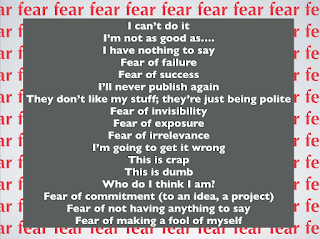
And thinking about all of that brought me around to thinking about the power of the WHAT IF question. WHAT IF is great for storytelling. What if a giant peach grew in my back yard? What if deafness was a superpower? As it turns out, though, WHAT IF is also great for anxiety. What if the elevator stops between floors? What if I need to get off the plane and I can’t?
I’m someone who has dealt with panic attacks on a number of occasions—especially in enclosed spaces—and it occurred to me a while back that my storyteller's tendency to ask WHAT IF also had an evil twin. As far as I’m concerned, the root of anxiety is all about projecting myself into an unknown – and as yet unrealized outcome.
How do you scare an audience? For one thing, you include doubt about the outcome. How’s it all going to turn out? What’s going to happen? Will they get there in time?
Likewise, a lot of writing fears – most of what’s in that previous image — turn on doubts about the outcome. What if they don’t like me? What if I can’t finish this story? What if I never publish again? To the extent that the key to anything is staying present in the moment, including writing, then fear about the unknown future is kryptonite.
On the other hand, as I continued to read on this topic, I found some good news, too. For instance, this idea:
FEAR IS A LIAR.

I love this image. For me, it’s truest in the middle of the night. That’s when my career always seems to be crashing and burning around me in the most convincing way – probably because I’m a captive audience, lying there in bed, where darkness turns my vision inward while I try to get back to sleep.
And maybe 3AM isn’t your problem. Some of you are captains of serotonin, I’m sure (and envious, too). But for the rest I encourage you to take a look at when you’re the most vulnerable to the lies you tell yourself. For me, it's taken some real effort to see those moments for what they are --- night time illusions that nearly always go away in the day, and usually because getting back to work is the perfect antidote. That awareness is no miracle pill, but it helps a lot.
Lawrence Block wrote: “Once we are aware of our fears, we are almost always capable of being more courageous than we think. …. Fear and courage are like lightning and thunder: they both start out at the same time, but the fear travels faster and arrives sooner.”
Here’s another take I like on the subject:
FEAR IS NUTRITIOUS.
Says Toni Morrison: “When you stiffen, you know that whatever you stiffen about is very important. The stuff is important, the fear itself is information.” And in The Courage to Write, Ralph Keyes says, “It’s important to distinguish between toxic and nutritious anxiety.” He refers to page fright, our version of stage fright, and the energy it can bring to the process.
The difference, I think, is between putting fear into the story—using the present writing moment to capitalize on that energy, even if it makes me uncomfortable – and, on the other hand, dealing with those future-minded fears, the ones that are based in all kinds of stuff I can’t know or control.
Anne Graham, daughter of Billy Graham, spoke about fear in a TED Talk radio hour podcast I heard. She spoke about it as a natural, even necessary, companion on the way toward (in the case of her examples) enlightenment, but I’d extend that to the kind of truth-seeking we do in storytelling as well. She spoke about Muhammed receiving the Koran—what she called the core mystical moment of Islam; and about Jesus on the cross in his last moments. His final words, she says, were “Father why have thou forsaken me?” Muhammed, she said, “was held not by conviction but by doubt.”
These were moments of trembling and fear, not elation or enlightenment, even though that’s exactly what these people, or characters, were on the cusp of. “Abolish all doubt,” she says, “and what’s left isn’t faith, but absolute heartless conviction.” The results, for us, might be a didactic or even soulless story. In religion, it’s fundamentalism. I love that quote, and I love that it came, for me, from a somewhat unexpected place.
And then lastly:
FEAR IS BORING.
Fear—the non-nutritious kind—is mundane. In Big Magic, Elizabeth Gilbert explains it like this:
“If you pass your hand over a petri dish containing a tadpole, the tadpole will flinch beneath your shadow. That tadpole cannot write poetry, and it cannot sing, and it will never know love or jealousy or triumph, and it has a brain the size of a punctuation mark, but it damn sure knows how to be afraid of the unknown. Well, so do I. So do we all. But there’s nothing particularly compelling about that. Do you see what I mean? You don’t get any special credit, is what I’m saying, for knowing how to be afraid of the unknown.”
So, is there a bottom line here? I suppose for me, it would be this: Fear is part of the creative process. It’s also a shared (can we say universal?) element of making art in this world, and any time I spend hoping to avoid it completely is not time well spent. Rather, let me be aware of it, allow it to play its part in my writing process, and, above all, never let it stop me from forging bravely--or at least, semi-bravely--ahead.
Resistance to the creative process takes on a lot of forms, but if we’re boiling things down to their nature or essence, FEAR is a good one-word candidate, evidenced in part by how much has been written about it. Books like “Art and Fear” by David Bayles and Ted Orland; “Big Magic” by Elizabeth Gilbert; and “The Courage To Write” by Ralph Keyes have been highly illuminating for me, and represent the tip of the iceberg, in terms of what’s been written on this topic.
So…what are we writers so afraid of? Plenty, as it turns out.

And thinking about all of that brought me around to thinking about the power of the WHAT IF question. WHAT IF is great for storytelling. What if a giant peach grew in my back yard? What if deafness was a superpower? As it turns out, though, WHAT IF is also great for anxiety. What if the elevator stops between floors? What if I need to get off the plane and I can’t?
I’m someone who has dealt with panic attacks on a number of occasions—especially in enclosed spaces—and it occurred to me a while back that my storyteller's tendency to ask WHAT IF also had an evil twin. As far as I’m concerned, the root of anxiety is all about projecting myself into an unknown – and as yet unrealized outcome.
How do you scare an audience? For one thing, you include doubt about the outcome. How’s it all going to turn out? What’s going to happen? Will they get there in time?
Likewise, a lot of writing fears – most of what’s in that previous image — turn on doubts about the outcome. What if they don’t like me? What if I can’t finish this story? What if I never publish again? To the extent that the key to anything is staying present in the moment, including writing, then fear about the unknown future is kryptonite.
On the other hand, as I continued to read on this topic, I found some good news, too. For instance, this idea:
FEAR IS A LIAR.

I love this image. For me, it’s truest in the middle of the night. That’s when my career always seems to be crashing and burning around me in the most convincing way – probably because I’m a captive audience, lying there in bed, where darkness turns my vision inward while I try to get back to sleep.
And maybe 3AM isn’t your problem. Some of you are captains of serotonin, I’m sure (and envious, too). But for the rest I encourage you to take a look at when you’re the most vulnerable to the lies you tell yourself. For me, it's taken some real effort to see those moments for what they are --- night time illusions that nearly always go away in the day, and usually because getting back to work is the perfect antidote. That awareness is no miracle pill, but it helps a lot.
Lawrence Block wrote: “Once we are aware of our fears, we are almost always capable of being more courageous than we think. …. Fear and courage are like lightning and thunder: they both start out at the same time, but the fear travels faster and arrives sooner.”
Here’s another take I like on the subject:
FEAR IS NUTRITIOUS.
Says Toni Morrison: “When you stiffen, you know that whatever you stiffen about is very important. The stuff is important, the fear itself is information.” And in The Courage to Write, Ralph Keyes says, “It’s important to distinguish between toxic and nutritious anxiety.” He refers to page fright, our version of stage fright, and the energy it can bring to the process.
The difference, I think, is between putting fear into the story—using the present writing moment to capitalize on that energy, even if it makes me uncomfortable – and, on the other hand, dealing with those future-minded fears, the ones that are based in all kinds of stuff I can’t know or control.
Anne Graham, daughter of Billy Graham, spoke about fear in a TED Talk radio hour podcast I heard. She spoke about it as a natural, even necessary, companion on the way toward (in the case of her examples) enlightenment, but I’d extend that to the kind of truth-seeking we do in storytelling as well. She spoke about Muhammed receiving the Koran—what she called the core mystical moment of Islam; and about Jesus on the cross in his last moments. His final words, she says, were “Father why have thou forsaken me?” Muhammed, she said, “was held not by conviction but by doubt.”
These were moments of trembling and fear, not elation or enlightenment, even though that’s exactly what these people, or characters, were on the cusp of. “Abolish all doubt,” she says, “and what’s left isn’t faith, but absolute heartless conviction.” The results, for us, might be a didactic or even soulless story. In religion, it’s fundamentalism. I love that quote, and I love that it came, for me, from a somewhat unexpected place.
And then lastly:
FEAR IS BORING.
Fear—the non-nutritious kind—is mundane. In Big Magic, Elizabeth Gilbert explains it like this:
“If you pass your hand over a petri dish containing a tadpole, the tadpole will flinch beneath your shadow. That tadpole cannot write poetry, and it cannot sing, and it will never know love or jealousy or triumph, and it has a brain the size of a punctuation mark, but it damn sure knows how to be afraid of the unknown. Well, so do I. So do we all. But there’s nothing particularly compelling about that. Do you see what I mean? You don’t get any special credit, is what I’m saying, for knowing how to be afraid of the unknown.”
So, is there a bottom line here? I suppose for me, it would be this: Fear is part of the creative process. It’s also a shared (can we say universal?) element of making art in this world, and any time I spend hoping to avoid it completely is not time well spent. Rather, let me be aware of it, allow it to play its part in my writing process, and, above all, never let it stop me from forging bravely--or at least, semi-bravely--ahead.
Published on October 13, 2018 05:56
October 12, 2018
Monsters and Villains by Darlene Beck Jacobson
Thinking about this month's topic - monsters and villains - took me on a trip to my childhood and the books I read. The books that have stayed with me because of the hero of the quest, but also because of the villain the hero had to encounter. In the days before Harry Potter and Voldemort, there were still plenty of scary characters in the pages of books.
My favorite monster was, and still is, Frankenstein. Not only because he was scary to look at, but also because he was so much less a monster than the man who created him and the people who misunderstood him. A classic tale that makes us consider the monster hidden in all of us.
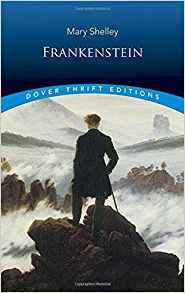
As far a villains go, there are a few that sent delicious shivers down my spine as a kid. The Queen of Hearts in Alice in Wonderland with her gleeful willingness to chop the heads off little girls.
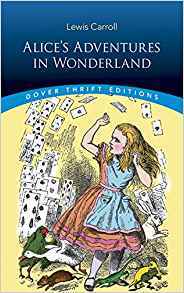
Another memorable rogue was Fagin from Oliver Twist. An opportunist who found a way to exploit children under the guise of caring for them. He housed and fed them while society ignored them. If they had to pick pockets and become thieves, oh well, it was all part of life in Victorian London.
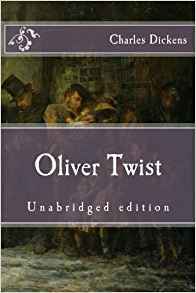
While frightening to my childhood soul, these villains paled in comparison to the quintessential villain of all time: The Wicked Witch of the West in L Frank Baum's The Wizard of Oz. Scary enough to shake the slippers off of any young girl, this character came to life in all her green-faced glory in the form of Margaret Hamilton in the classic movie. Scary to look at, to listen to, and to be in the same room with.
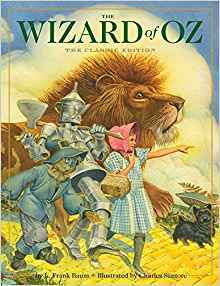
There's a villain to remember!

My favorite monster was, and still is, Frankenstein. Not only because he was scary to look at, but also because he was so much less a monster than the man who created him and the people who misunderstood him. A classic tale that makes us consider the monster hidden in all of us.

As far a villains go, there are a few that sent delicious shivers down my spine as a kid. The Queen of Hearts in Alice in Wonderland with her gleeful willingness to chop the heads off little girls.

Another memorable rogue was Fagin from Oliver Twist. An opportunist who found a way to exploit children under the guise of caring for them. He housed and fed them while society ignored them. If they had to pick pockets and become thieves, oh well, it was all part of life in Victorian London.

While frightening to my childhood soul, these villains paled in comparison to the quintessential villain of all time: The Wicked Witch of the West in L Frank Baum's The Wizard of Oz. Scary enough to shake the slippers off of any young girl, this character came to life in all her green-faced glory in the form of Margaret Hamilton in the classic movie. Scary to look at, to listen to, and to be in the same room with.

There's a villain to remember!

Published on October 12, 2018 06:25
October 11, 2018
Name Names? Hmm.
By Jody Feldman
 I’m a softie. In my perfect world, everyone would live allergy-free, amid blue skies and meadows, near mountains and oceans, with all the modern conveniences. We'd smile and scamper and frolic like the happy, little creatures and---
I’m a softie. In my perfect world, everyone would live allergy-free, amid blue skies and meadows, near mountains and oceans, with all the modern conveniences. We'd smile and scamper and frolic like the happy, little creatures and---
Okay, that makes for boring stories (and lives). Enter the villains.
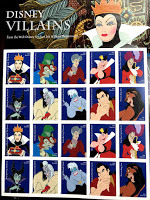 My perfect villain doesn’t have a particular name. Take your pick: Cruella, Scar, Urusula, Maleficent, Gaston ... I could go on and on with Disney characters alone (most of which, of course, were borrowed from the Brothers Grimm, Hans Christian Anderson, and more). What makes these villains extra dastardly is the way they make us sprout an entire field of empathy for the main characters.
My perfect villain doesn’t have a particular name. Take your pick: Cruella, Scar, Urusula, Maleficent, Gaston ... I could go on and on with Disney characters alone (most of which, of course, were borrowed from the Brothers Grimm, Hans Christian Anderson, and more). What makes these villains extra dastardly is the way they make us sprout an entire field of empathy for the main characters.
What good are Cruella without the Dalmations, Scar without Simba, Urusula without Arielle, Maleficent without Snow White, Gaston without Belle?
Unless the author/creator makes us feel, first, for the victim, then the villain is just an ugly being we malign on Twitter. The hunter, without the hunted, cannot exist.
Which is all a lot of musing to come to my point. I do not have a favorite villain. Then again, there was this guy from the old Batman series. I think I just liked his riddles.

 I’m a softie. In my perfect world, everyone would live allergy-free, amid blue skies and meadows, near mountains and oceans, with all the modern conveniences. We'd smile and scamper and frolic like the happy, little creatures and---
I’m a softie. In my perfect world, everyone would live allergy-free, amid blue skies and meadows, near mountains and oceans, with all the modern conveniences. We'd smile and scamper and frolic like the happy, little creatures and---Okay, that makes for boring stories (and lives). Enter the villains.
 My perfect villain doesn’t have a particular name. Take your pick: Cruella, Scar, Urusula, Maleficent, Gaston ... I could go on and on with Disney characters alone (most of which, of course, were borrowed from the Brothers Grimm, Hans Christian Anderson, and more). What makes these villains extra dastardly is the way they make us sprout an entire field of empathy for the main characters.
My perfect villain doesn’t have a particular name. Take your pick: Cruella, Scar, Urusula, Maleficent, Gaston ... I could go on and on with Disney characters alone (most of which, of course, were borrowed from the Brothers Grimm, Hans Christian Anderson, and more). What makes these villains extra dastardly is the way they make us sprout an entire field of empathy for the main characters.What good are Cruella without the Dalmations, Scar without Simba, Urusula without Arielle, Maleficent without Snow White, Gaston without Belle?
Unless the author/creator makes us feel, first, for the victim, then the villain is just an ugly being we malign on Twitter. The hunter, without the hunted, cannot exist.
Which is all a lot of musing to come to my point. I do not have a favorite villain. Then again, there was this guy from the old Batman series. I think I just liked his riddles.

Published on October 11, 2018 03:30
October 8, 2018
Dr. Jekyll or Mr. Hyde? --- by Jane Kelley
I just finished reading Robert Louis Stevenson's Strange Case of Dr. Jekyll and Mr. Hyde.
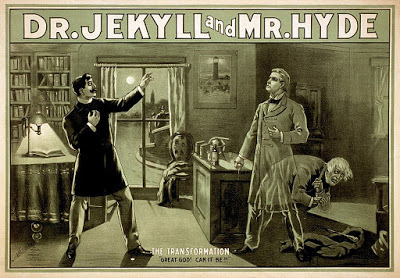
The novella has become such a part of our culture that I felt I knew the story without having read it. (I confess that when I was a child, I mixed up the two characters. I believed that Mr. Hyde was the good fellow and Dr. Jekyll was the bad one, based purely on the sound of the names.)
But it is Mr. Hyde who is so terrible that everyone he encounters shrinks from him in horror. He has no super powers. He has no arsenal weapons. In fact, the murder we witness was committed with a walking stick. So then what makes him such a monster?
I'll quote from what Dr. Jekyll says about him in the novella. "All human beings are commingled out of good and evil: and Hyde alone in the ranks of mankind was pure evil."
Dr. Jekyll should know. He created Mr. Hyde. In a confessional letter which we finally get to read at the end of the novella, Jekyll explains that he had suffered from his struggles to subdue his worst traits. To avoid feeling guilty, he embarked on an experiment. He took a chemical that enabled him to separate into two men. Jekyll would be good. But Hyde would be unfettered by compassion or morality or any of our better traits.
Hyde does despicable things. (Which the author decides not to name.) Jekyll suffers some remorse for this. He is also frightened to discover that sometimes he transforms into Hyde even without using the chemicals. Jekyll tries to quit letting Hyde lose upon the world, but Jekyll can't. He finds it unbearable to be completely good. "I began to be tortured with throes and longings." And when he gave in to them, "My devil had long been caged, he came out roaring."
No good can come of this. For many moral reasons, but also because the chemical runs out. No more can be found. Jekyll writes his confession and finds the means to deliver it to his friend (and lawyer). Then he does not kill himself--and his monstrous creation. Instead, he takes the last draught and turns back in Hyde in hopes that Hyde, being hounded by justice, will commit suicide. Hyde does.
Many have tried to identify what inspired Robert Louis Stevenson to create these characters and this tale. Some hoped that the tale was meant to show the dangers of straying from the path of righteousness. Some have wondered what were Stevenson's own dark secrets. Why doesn't he describe Hyde's actions in the novella? Certainly most other writers would.
I haven't read the biographies. I know little of his life. But I believe that he was not just exploring the duality of human nature. I think he was fascinated by his own powers as creator.
Jekyll was good. Hyde was evil. But we can't forget that Jekyll created Hyde. And refused to destroy him. So I wonder who really was the monster?
In Graham Balfour's biography, The Life of Robert Louis Stevenson, he quotes Stevenson's wife.
"In the small hours of one morning, I was awakened by cries of horror from Louis. Thinking he had a nightmare, I awakened him. He said angrily, 'why did you wake me? I was dreaming a fine bogey tale.' I had awakened him at the first transformation [from Jekyll into Hyde] scene."
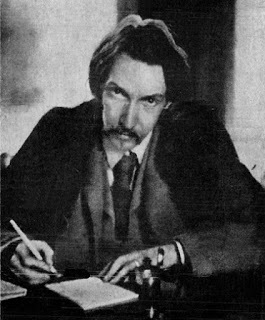 Robert Louis Stevenson
Robert Louis Stevenson

The novella has become such a part of our culture that I felt I knew the story without having read it. (I confess that when I was a child, I mixed up the two characters. I believed that Mr. Hyde was the good fellow and Dr. Jekyll was the bad one, based purely on the sound of the names.)
But it is Mr. Hyde who is so terrible that everyone he encounters shrinks from him in horror. He has no super powers. He has no arsenal weapons. In fact, the murder we witness was committed with a walking stick. So then what makes him such a monster?
I'll quote from what Dr. Jekyll says about him in the novella. "All human beings are commingled out of good and evil: and Hyde alone in the ranks of mankind was pure evil."
Dr. Jekyll should know. He created Mr. Hyde. In a confessional letter which we finally get to read at the end of the novella, Jekyll explains that he had suffered from his struggles to subdue his worst traits. To avoid feeling guilty, he embarked on an experiment. He took a chemical that enabled him to separate into two men. Jekyll would be good. But Hyde would be unfettered by compassion or morality or any of our better traits.
Hyde does despicable things. (Which the author decides not to name.) Jekyll suffers some remorse for this. He is also frightened to discover that sometimes he transforms into Hyde even without using the chemicals. Jekyll tries to quit letting Hyde lose upon the world, but Jekyll can't. He finds it unbearable to be completely good. "I began to be tortured with throes and longings." And when he gave in to them, "My devil had long been caged, he came out roaring."
No good can come of this. For many moral reasons, but also because the chemical runs out. No more can be found. Jekyll writes his confession and finds the means to deliver it to his friend (and lawyer). Then he does not kill himself--and his monstrous creation. Instead, he takes the last draught and turns back in Hyde in hopes that Hyde, being hounded by justice, will commit suicide. Hyde does.
Many have tried to identify what inspired Robert Louis Stevenson to create these characters and this tale. Some hoped that the tale was meant to show the dangers of straying from the path of righteousness. Some have wondered what were Stevenson's own dark secrets. Why doesn't he describe Hyde's actions in the novella? Certainly most other writers would.
I haven't read the biographies. I know little of his life. But I believe that he was not just exploring the duality of human nature. I think he was fascinated by his own powers as creator.
Jekyll was good. Hyde was evil. But we can't forget that Jekyll created Hyde. And refused to destroy him. So I wonder who really was the monster?
In Graham Balfour's biography, The Life of Robert Louis Stevenson, he quotes Stevenson's wife.
"In the small hours of one morning, I was awakened by cries of horror from Louis. Thinking he had a nightmare, I awakened him. He said angrily, 'why did you wake me? I was dreaming a fine bogey tale.' I had awakened him at the first transformation [from Jekyll into Hyde] scene."
 Robert Louis Stevenson
Robert Louis Stevenson
Published on October 08, 2018 07:00
October 7, 2018
Who is the Queen of Hearts? by Deborah Lytton
The villains that scared me the most when I was a young reader were the Wicked Witch of the West from THE WONDERFUL WIZARD OF OZ by L. Frank Baum and the Queen of Hearts from ALICE'S ADVENTURES IN WONDERLAND by Lewis Carroll. I was impressed that Dorothy and Alice were brave enough to stand up to such frightening villains. I hoped if I were faced with such challenges, I might display the same courage.
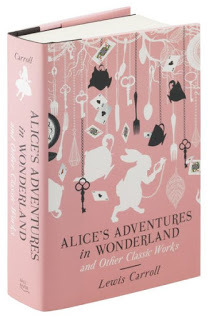
As a writer, I see these characters differently. Now I understand that the antagonists are essential to the plot of the stories and the growth of the main characters. Without the Queen of Hearts, Alice would never become strong enough to find her way out of the rabbit hole. Without the Wicked Witch, Dorothy would never discover her own worth and find her own path home. The characters are used to reveal weaknesses in the heroines that they must overcome to succeed.

In my own realistic fiction writing, it is my goal to find the humanity in my contemporary villains so that readers can understand them. The heroine's worst trait can often be mirrored in the antagonist. It is only through the resolution of the relationship that the heroine can recognize herself in the eyes of the other character. Sometimes, the antagonist in the story can even be the heroine herself, for her own fears or insecurities might be standing in the way of her triumphant success. The conflicts that arise in the stories we write can come from a witch or a queen or even from the girl next door. As long as we find a way to keep the pressure on the main character, the conflict will work to propel the plot forward. So today, find the humanity in your villain. Seek to challenge your heroine. And write a story that readers will cherish for years to come.

As a writer, I see these characters differently. Now I understand that the antagonists are essential to the plot of the stories and the growth of the main characters. Without the Queen of Hearts, Alice would never become strong enough to find her way out of the rabbit hole. Without the Wicked Witch, Dorothy would never discover her own worth and find her own path home. The characters are used to reveal weaknesses in the heroines that they must overcome to succeed.

In my own realistic fiction writing, it is my goal to find the humanity in my contemporary villains so that readers can understand them. The heroine's worst trait can often be mirrored in the antagonist. It is only through the resolution of the relationship that the heroine can recognize herself in the eyes of the other character. Sometimes, the antagonist in the story can even be the heroine herself, for her own fears or insecurities might be standing in the way of her triumphant success. The conflicts that arise in the stories we write can come from a witch or a queen or even from the girl next door. As long as we find a way to keep the pressure on the main character, the conflict will work to propel the plot forward. So today, find the humanity in your villain. Seek to challenge your heroine. And write a story that readers will cherish for years to come.
Published on October 07, 2018 13:48
October 3, 2018
Meet Samantha Rose, one of My Favorite Villains of 2018 Middle Grade Books
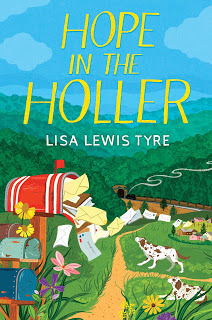 One of my favorite middle grade reads this year has been HOPE IN THE HOLLER by Lisa Lewis Tyre. You can read my review with some words from Lisa herself at Live Your Poem. Here's the summary of the book as provided by the publisher:
One of my favorite middle grade reads this year has been HOPE IN THE HOLLER by Lisa Lewis Tyre. You can read my review with some words from Lisa herself at Live Your Poem. Here's the summary of the book as provided by the publisher:The poignant--and funny--story of a girl trying to be brave and find her place in the world after she's sent to live with scheming relatives.
Right before Wavie's mother died, she gave Wavie a list of instructions to help her find her way in life, including this one: Be brave, Wavie B! You got as much right to a good life as anybody, so find it! But little did Wavie's mom know that events would conspire to bring Wavie back to Conley Hollow, the Appalachian hometown her mother tried to leave behind. Now Wavie's back in the Holler--and in the clutches of her Aunt Samantha Rose. Life with the devilish Samantha Rose and her revolting cousin Hoyt is no picnic, but there's real pleasure in sleeping in her own mother's old bed, and making friends with the funny, easygoing kids her aunt calls the "neighborhood-no-accounts." With their help, Wavie just might be able to prevent her aunt from becoming her legal guardian, and find her courage and place in the world.
I love this book for many reasons -- and one of them is because of Wavie's Aunt Samantha Rose, who is so very easy to despise! Here's how Wavie describes her in the book:
"And Samantha Rose reminded me of rock candy, sugary sweet and hard enough to crack a molar. She threw around a lot of honeys and darlin's but they were always added on top of something bad.
'The toilet is clogged. How about trying your hand with a plunger, honey?'
'You'll be getting free meals at the school, so it'd help if you left the cereal for your uncle, darlin'.'"
One of Wavie's habits is to rearrange letters and make up new words. Here are some of the words she conjures out of "Samantha Rose:"
"I'd written TRASH, TORN, TEARS, RAN, MET, RANTS, MONSTER on my first night."
So, writers and readers: do yourself a favor and meet Samantha Rose! You'll be so glad you did. xo
-----------------------
Irene Latham is an Alabama author of more than a dozen current and forthcoming poetry, fiction and picture books for children and adults, including Leaving Gee's Bend, 2011 ALLA Children's Book of the Year and Can I Touch Your Hair? Poems of Race, Mistakes and Friendship (with Charles Waters). Winner of the 2016 ILA Lee Bennett Hopkins Promising Poet Award, she also serves as poetry editor for the Birmingham Arts Journal.
Published on October 03, 2018 03:30
October 1, 2018
Smack Dab News
Michele Weber Hurwitz had a new deal announced last week in the Publisher's Weekly Children's Bookshelf newsletter. This will be her fifth middle grade novel.
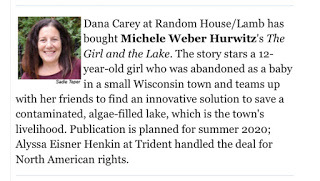 Congrats to Michele!
Congrats to Michele!
 Congrats to Michele!
Congrats to Michele!
Published on October 01, 2018 05:00
September 30, 2018
Sit, Stand, Walk...and Write!
They say sitting is the new smoking -- the new bad habit bringing negative health outcomes to a population of people (that’s us) who spend too much time in their chairs, usually staring at a screen, maybe with shoulders unconsciously hunched forward, and our spines out of alignment.
For me, I started to notice it in the general stiffness of my hips. The decent flexibility I’d always enjoyed started to slip away from me, after several years of too-much-computer-time. It was nothing major, but at the same time, there was also nothing welcome about it, either. And it wasn't going to turn itself back....
So I got a walking desk. That was seven years ago, and while I wish I used it more often, it has, nonetheless, been a godsend.
Given the amount of time I spend at the computer, I sprung for a Cadillac model -- aka, a Steelcase sit-to-walk station. It has a long tabletop for a desk, which allows room for my office chair and the treadmill to remain side by side all the time. The desk itself goes up and down with the touch of a button, and I can easily transition from sitting, to standing, to walking whenever I like.
At the same time, this is a no-Cadillac-necessary kind of thing. I have friends who have jury-rigged something similar for themselves just using a regular treadmill, a piece of plywood for a desk, and a laptop. The point, of course, is to get out of our office chairs and move -- and not just for an isolated workout, but in a sustained kind of way. Workouts are great, too, but studies have shown that there's no substitute for regularly getting out of the chair throughout the day.

A lot of people are skeptical about the idea of walking and working at the same time, but I’m here to tell you that it’s a non-issue. Just to be sure, I went into the Steelcase showroom before I bought my unit, and they let me spend a couple of hours on a few different days, writing and testing out their floor model. That’s where I learned that keyboarding is no problem at all, especially at the pace I'm talking about -- 1.2 to 2.0 miles per hour. It's never been about burning calories, just about getting out of that perpetual-sitting position and onto my feet. If my task of the moment involves a lot of writing by hand, I’ll stay off the treadmill, but for everything else -- keyboarding, drafting, research, surfing online, and reading -- it's a surprisingly easy and seamless transition to walking.
Happy to answer any questions if you have them, below in the comments.
For me, I started to notice it in the general stiffness of my hips. The decent flexibility I’d always enjoyed started to slip away from me, after several years of too-much-computer-time. It was nothing major, but at the same time, there was also nothing welcome about it, either. And it wasn't going to turn itself back....
So I got a walking desk. That was seven years ago, and while I wish I used it more often, it has, nonetheless, been a godsend.
Given the amount of time I spend at the computer, I sprung for a Cadillac model -- aka, a Steelcase sit-to-walk station. It has a long tabletop for a desk, which allows room for my office chair and the treadmill to remain side by side all the time. The desk itself goes up and down with the touch of a button, and I can easily transition from sitting, to standing, to walking whenever I like.
At the same time, this is a no-Cadillac-necessary kind of thing. I have friends who have jury-rigged something similar for themselves just using a regular treadmill, a piece of plywood for a desk, and a laptop. The point, of course, is to get out of our office chairs and move -- and not just for an isolated workout, but in a sustained kind of way. Workouts are great, too, but studies have shown that there's no substitute for regularly getting out of the chair throughout the day.

A lot of people are skeptical about the idea of walking and working at the same time, but I’m here to tell you that it’s a non-issue. Just to be sure, I went into the Steelcase showroom before I bought my unit, and they let me spend a couple of hours on a few different days, writing and testing out their floor model. That’s where I learned that keyboarding is no problem at all, especially at the pace I'm talking about -- 1.2 to 2.0 miles per hour. It's never been about burning calories, just about getting out of that perpetual-sitting position and onto my feet. If my task of the moment involves a lot of writing by hand, I’ll stay off the treadmill, but for everything else -- keyboarding, drafting, research, surfing online, and reading -- it's a surprisingly easy and seamless transition to walking.
Happy to answer any questions if you have them, below in the comments.
Published on September 30, 2018 06:51
September 29, 2018
Field Trips Aren't Just For Kids!
By Charlotte Bennardo
When I was in school, I loved field trips (well, except if it was to a museum filled with stuffed, dead animals). Out of class for the day, no homework that night, you could sit with your friend and talk on the bus the whole way there. What was not to love?
 Photo courtesy of Pexels
Photo courtesy of Pexels
I still take field trips. For a while I chaperoned my sons' field trips and now that they're grown, I go on my own. As an author, I need to get a 'feel' for a place, or collect some information to write some stories. I have a time travel novel, and it opens up with a 15-year-old boy working as a blacksmith during King Arthur's time. So, where am I going to find a blacksmith to question? At the New York Renaissance Faire. It's almost like walking back several centuries when you look at some of the craftsmen and wares. The gentleman was dirtied with soot, had beefy arms from swinging his heavy hammer on the hot metal, and wore clothes that my young blacksmith might have worn; knitted 'stockings', a leather vest, and a muslin shirt. These details helped me describe my character in believable detail. (Alas, I forgot my cell and didn't get a pic... maybe next year.)
Another field trip is the Hacklebarney park. There are waterfalls and pristine woods (except for some picnic tables). I can see mushrooms and toadstools, hear deer picking their way through the fallen leaves, and put my hand in the icy stream. All these details, which are not in my backyard, help me to give my stories depth and make the reader feel like they are there, in the story.
One writer friend, Alison Ashley Formento, wrote These Bees Count! For her research, she visited and talked with the official White House beekeeper in Washington, D.C. (Betcha didn't know there was an official beekeeper- well neither did I!)
I wish I could travel to the space station to gather background research for my sci fi novel, but sadly, not yet. I did, however, travel to NYC to do research for the Sirenz books. When a novel takes place on actual city streets, you have to make sure you get the details right: is Central Park the next block over? Is this a one-way street? Am I in the Fashion District or Little Italy?
Even when I can't travel to places for research, like Rome where Blonde OPS takes place (really, I think the publisher should have sent me there...) I did a 'virtual' field trip. Using Google Earth, I could travel down the main thoroughfares or meander through side streets and alleys, seeing houses and businesses as they really are. This gives authenticity. It's embarrassing when a reader points out a mistake in your writing because they've been to the place and you've described it all wrong.
I think it's time for another field trip. I'll have to think of a place I'd like to go and make up the story when I get there.
When I was in school, I loved field trips (well, except if it was to a museum filled with stuffed, dead animals). Out of class for the day, no homework that night, you could sit with your friend and talk on the bus the whole way there. What was not to love?
 Photo courtesy of Pexels
Photo courtesy of PexelsI still take field trips. For a while I chaperoned my sons' field trips and now that they're grown, I go on my own. As an author, I need to get a 'feel' for a place, or collect some information to write some stories. I have a time travel novel, and it opens up with a 15-year-old boy working as a blacksmith during King Arthur's time. So, where am I going to find a blacksmith to question? At the New York Renaissance Faire. It's almost like walking back several centuries when you look at some of the craftsmen and wares. The gentleman was dirtied with soot, had beefy arms from swinging his heavy hammer on the hot metal, and wore clothes that my young blacksmith might have worn; knitted 'stockings', a leather vest, and a muslin shirt. These details helped me describe my character in believable detail. (Alas, I forgot my cell and didn't get a pic... maybe next year.)
Another field trip is the Hacklebarney park. There are waterfalls and pristine woods (except for some picnic tables). I can see mushrooms and toadstools, hear deer picking their way through the fallen leaves, and put my hand in the icy stream. All these details, which are not in my backyard, help me to give my stories depth and make the reader feel like they are there, in the story.
One writer friend, Alison Ashley Formento, wrote These Bees Count! For her research, she visited and talked with the official White House beekeeper in Washington, D.C. (Betcha didn't know there was an official beekeeper- well neither did I!)
I wish I could travel to the space station to gather background research for my sci fi novel, but sadly, not yet. I did, however, travel to NYC to do research for the Sirenz books. When a novel takes place on actual city streets, you have to make sure you get the details right: is Central Park the next block over? Is this a one-way street? Am I in the Fashion District or Little Italy?
Even when I can't travel to places for research, like Rome where Blonde OPS takes place (really, I think the publisher should have sent me there...) I did a 'virtual' field trip. Using Google Earth, I could travel down the main thoroughfares or meander through side streets and alleys, seeing houses and businesses as they really are. This gives authenticity. It's embarrassing when a reader points out a mistake in your writing because they've been to the place and you've described it all wrong.
I think it's time for another field trip. I'll have to think of a place I'd like to go and make up the story when I get there.
Published on September 29, 2018 07:00



